I can’t believe how easy this DIY solar fountain is to create! With all the beautiful pond and water plants, and the sweet bubbling sound of water, it makes us feel that we are sitting by a little creek in the mountains.
Everyone loves garden fountains and patio ponds. But they usually require lots of work to set up plumbing pipes, electrical power cord, etc.
Made from an old galvanized tub and a simple solar fountain pump, this outdoor solar fountain ( birds love it too like a birdbath! ) is so easy to build and maintain. Enjoy it all year round, or in colder climates, move it easily to a protected location when the temperature drops below freezing.
So excited to share with you today how to create a simple DIY fountain easily even without using a fountain kit. You can even skip the solar pump and use this method to make a water fountain without a pump!
Don’t miss the Helpful Tips section at the end on choosing vessels, solar pumps, adding aquatic plants or fish, and how to keep your solar fountain water clean and free of mosquitoes. 🙂
*Some resources in article are affiliate links. Full disclosure here.
Table of Contents
- Video tutorial below: Easy DIY outdoor solar fountain!
- Materials needed to make a simple outdoor solar fountain or bird bath:
- Step 1: start with water and plants
- Step 2: Add solar fountain pump.
- Helpful Tips and FAQs
Video tutorial below: Easy DIY outdoor solar fountain!
Materials needed to make a simple outdoor solar fountain or bird bath:
( Some of the helpful resources are affiliate links. Full disclosure here. )
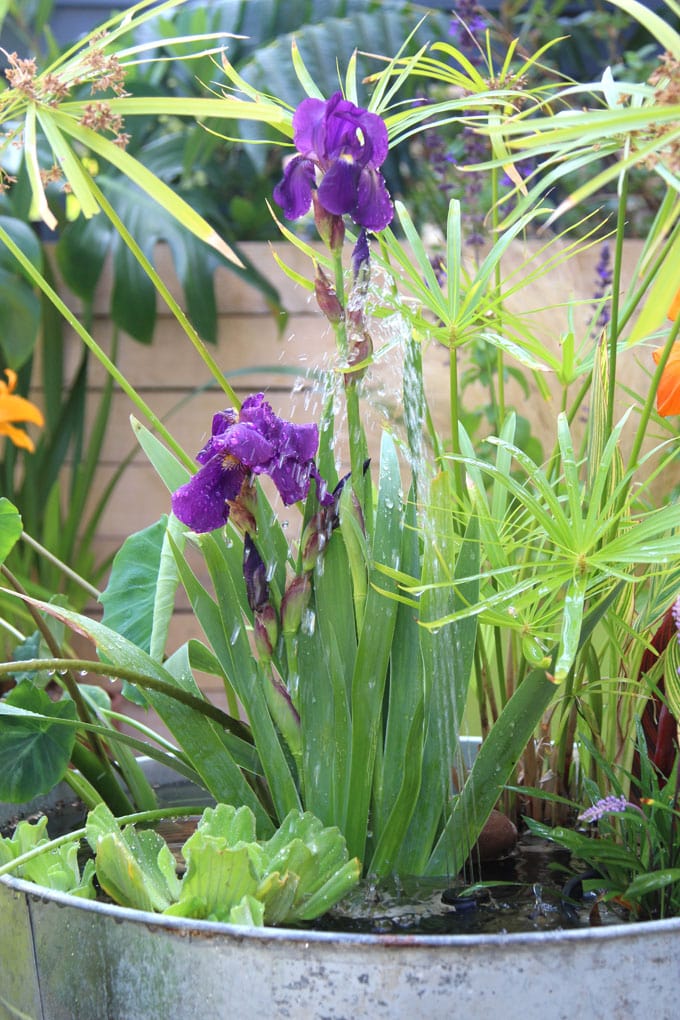
- a vessel: we used a Behrens 15 Gallon Round Steel Tub, which measures 25″ diameter by 12″ tall. You can also use a bucket, half a whiskey barrel, a flower pot, etc
- solar fountain pump: we used this 1.5w solar pump on Amazon. Here’s another one that is similar. They both have a 10 feet cord from the water pump to the solar panel so you can have the DIY water fountain or birdbath in sun or shade as long as the panel is in the sun.
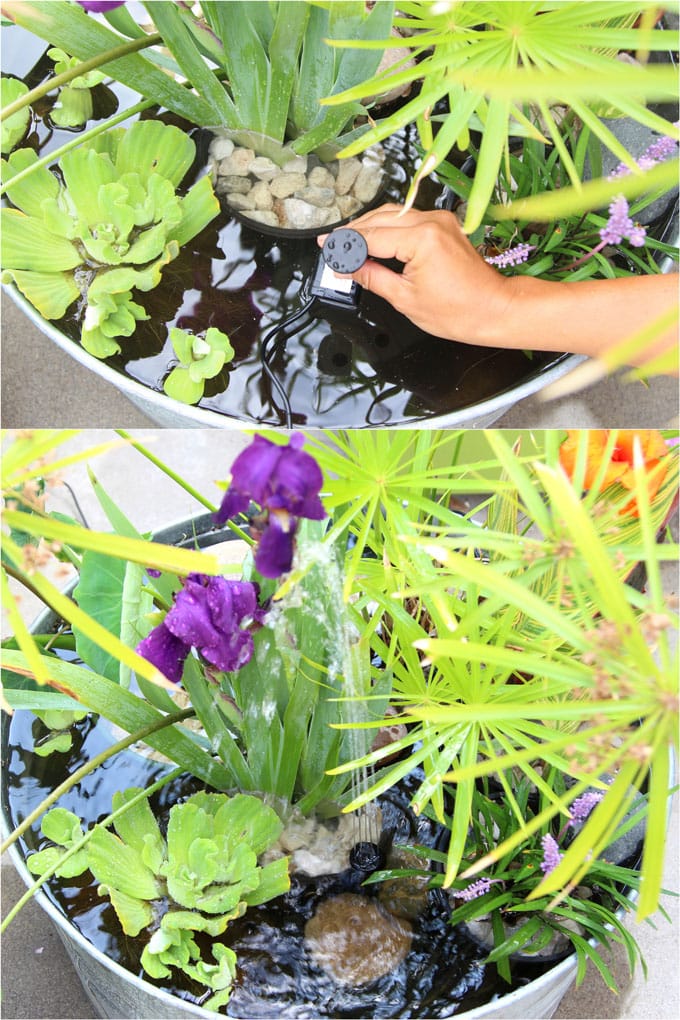
Step 1: start with water and plants
After selecting the location for your DIY water fountain or bird bath, it’s time to add water and aquatic plants. Pond and water plants are optional, but we added them because they are so beautiful. Plant roots also help keeping the water clean and free from algae growth.
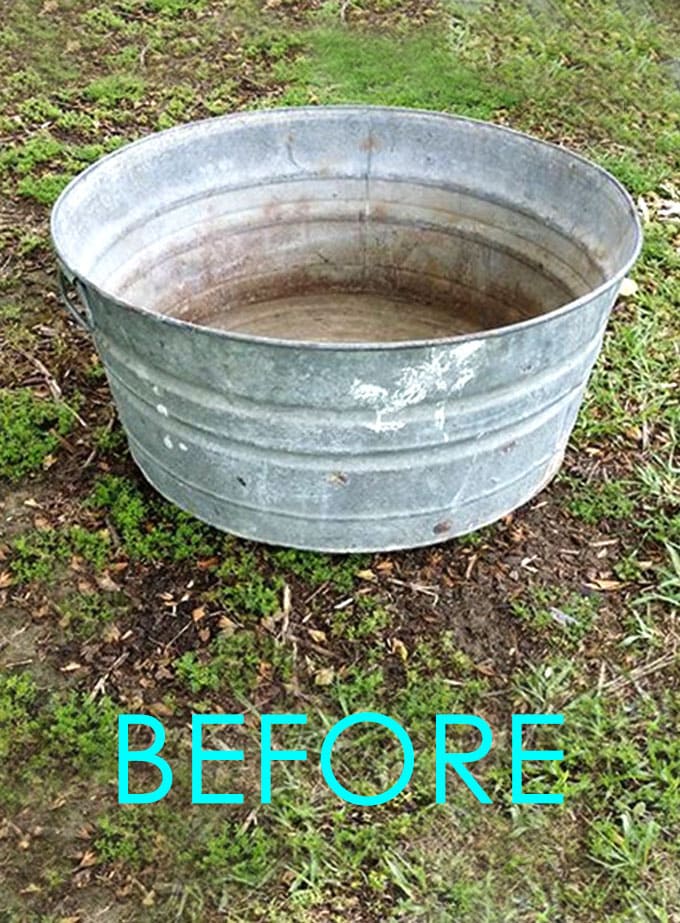
Fill the tub or large pot halfway with water. You can add more water after all the plants are placed inside the basin.
In the Helpful Tips section at the end, I will share more about what type of soil or pots to use for pond and water plants. In short, use plastic nursery pots, and avoid rich potting soil. We also topped the pots with some pea gravel and small river rocks which look pretty and prevents any soil or dirt from floating up.
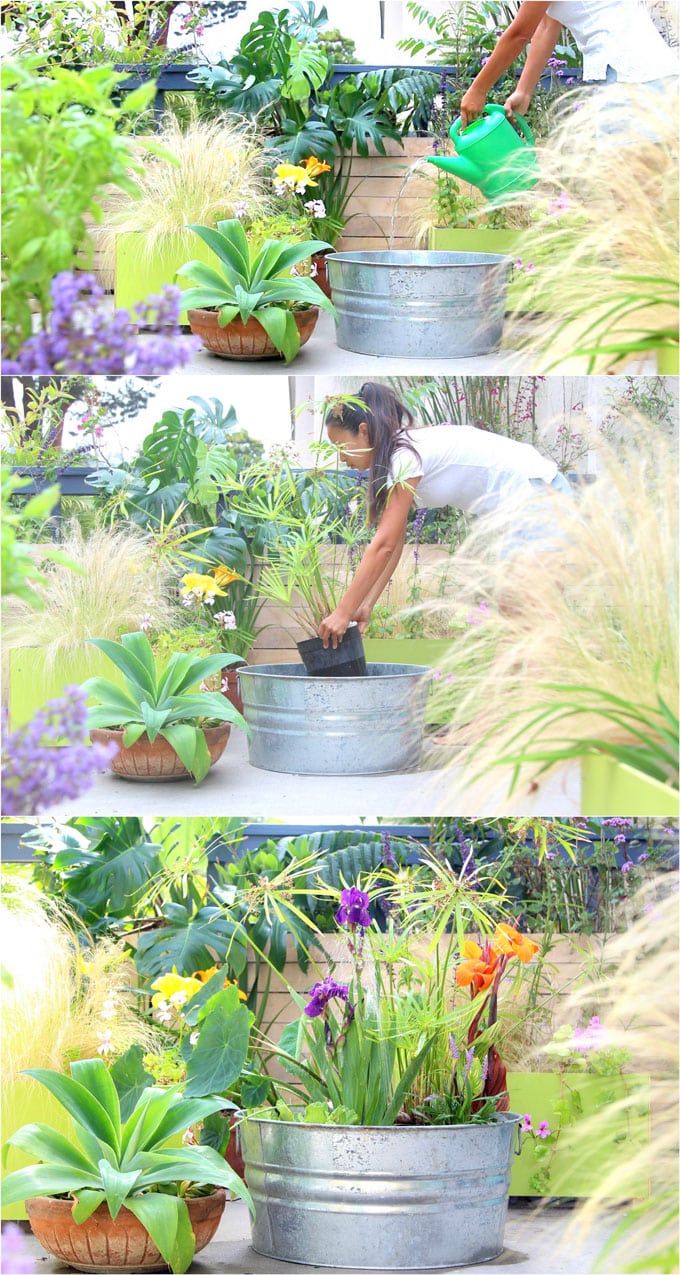
There are many beautiful and easy to find water garden plants. Here we used Cyperus involucratus “Baby Tut”, Taro, Canna Lily, Siberian Iris, and Loriope. These are emergent type water plants.
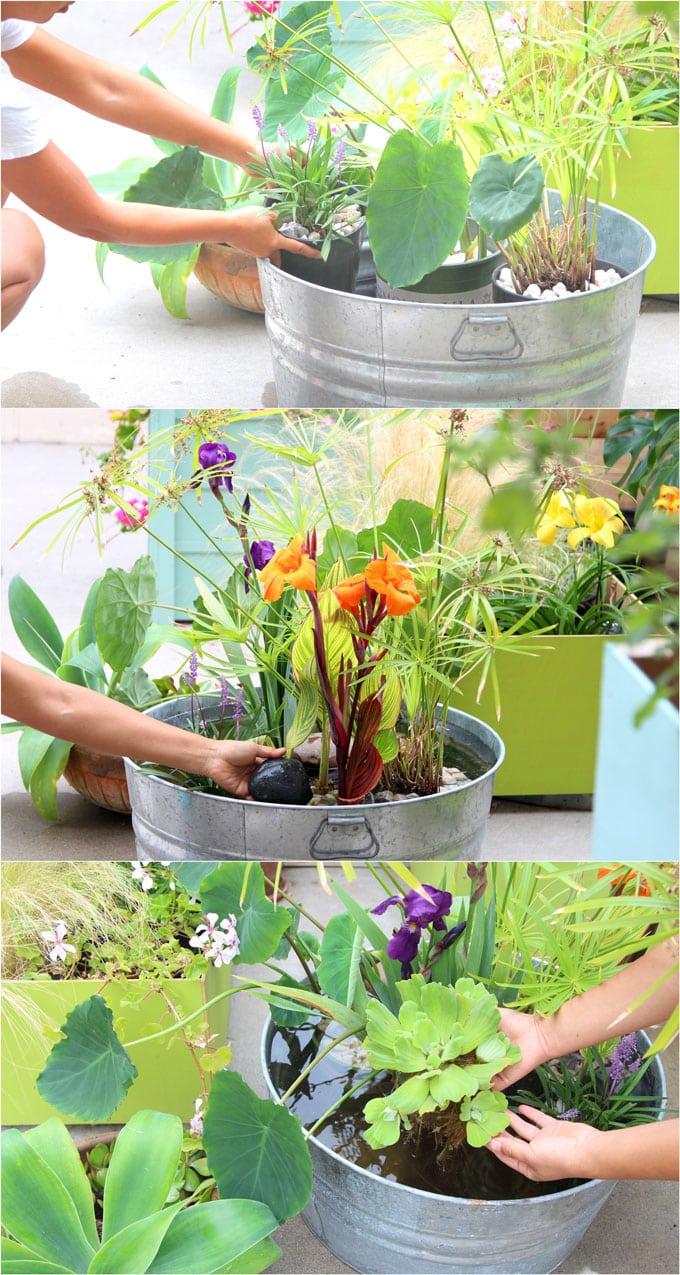
We also added water lettuce, which is a floating type water garden plant. Its massive root can clean the water in the basin really effectively. We can stop at this point with our lovely mini patio pond! However, the sound of water is just too irresistible…
You may also love: 30+ colorful shade plant pots with designer planting list for each!
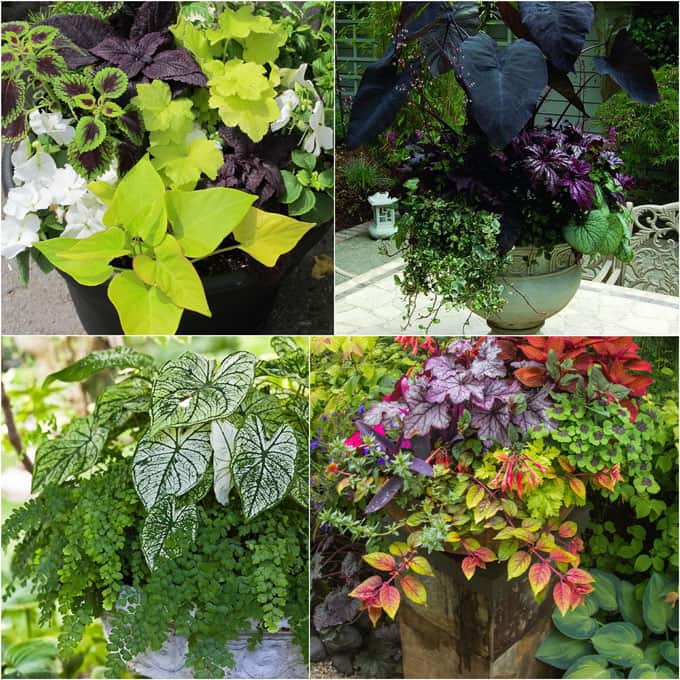
30+ colorful shade plant pots with planting list for each!
Step 2: Add solar fountain pump.
How do you make a simple water fountain? Use a solar pump and a free standing basin, you will save 80% of the work!
This 1.5w solar pump (here is another one that is similar ) has a 10 feet cord from the pump to the solar panel so you can place the panel in the sun but out of sight!
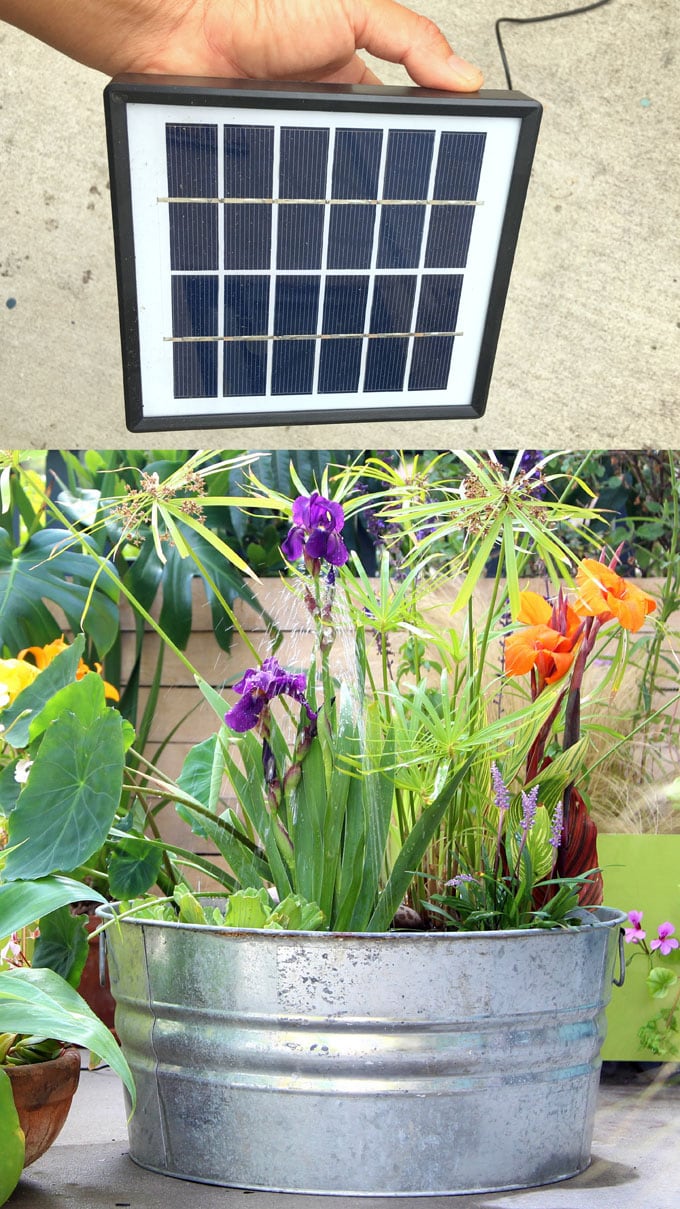
The solar pump comes with several nozzles, some are bubblers, some are sprayers. This fountain pump does not store solar energy, which means the fountain will be off when the sun is not shinning on the solar panel.
Now you have a DIY bubble fountain for your garden, patio, porch, and deck!
Helpful Tips and FAQs
Solar fountain pump choices and considerations.
When creating an outdoor solar fountain, pay attention to water splash radius, which will affect where you place the fountain and other furniture and decor items.
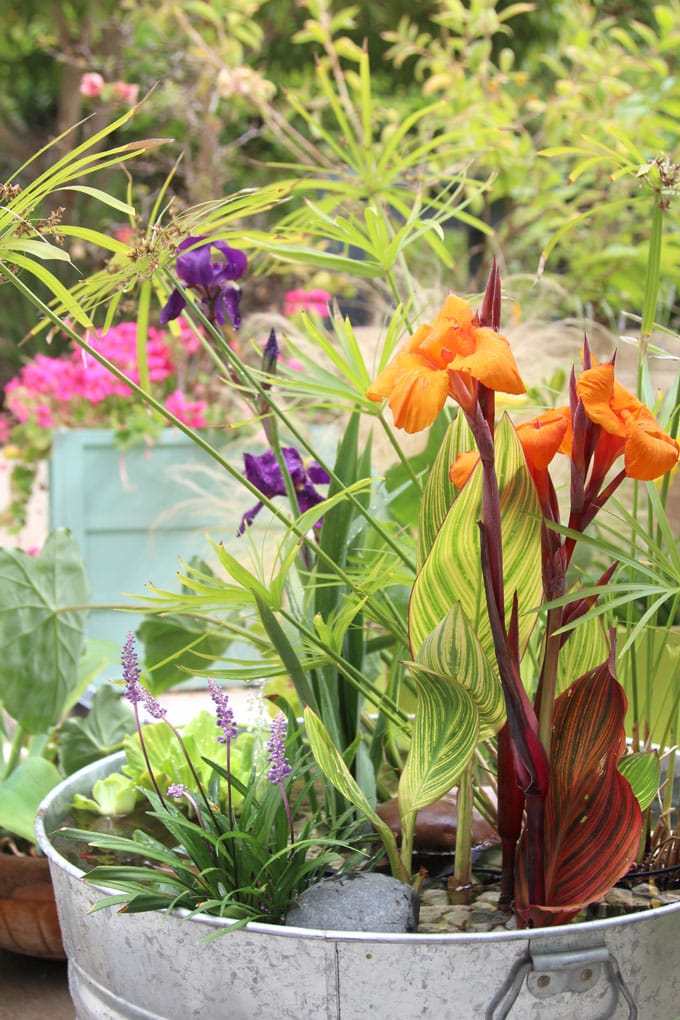
IMPORTANT: always keep the pump submerged in water when its running. When making adjustments, face the panel away from the sun until you can keep the pump submerged in water. Otherwise the pump could burn out.This applies to both the solar pump we are using and the floating type solar pumps like these.
Solar fountain vessel choices and considerations.
In addition to galvanized steel tubs, you can also use a half wine barrel , a large bowl, or any containers without drainage holes, that can hold at least 3″ deep (see solar pump) water and are designed for outdoor use. This basin depth will accommodate most small pumps.
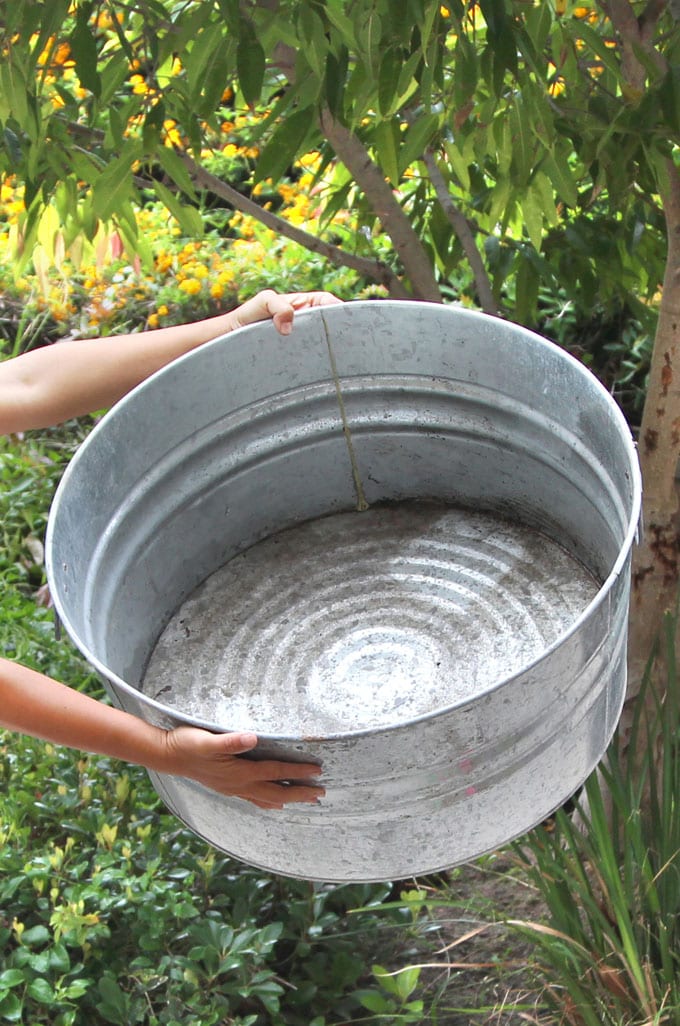
How to keep your solar fountain water clean and free of mosquitoes.
Algae grows where there’s lots of sun or nutrients in water. Place the fountain in shade, or use plants to shade the water. Plant roots will also use up nutrients. I will write more about water and aquatic plants in another post to give you all the details and variations!
Mosquito larvae can only survive in stagnant water. If the fountain is running often, it will deter mosquitoes. You can also introduce small fish, such as mosquito fish, into your fountain to feed on any new mosquito larvae and remove algae as it forms.
Thanks to our reader Beth for the following great tips on small fish: “goldfish are not really appropriate for a very small tub style fountain/pond. They are small at the pet store but can grow to 8-10″ long. They really need 20+ gallons each to thrive, a whiskey gallon sized vessel is about 16 gallons and teh plants etc displace some of that. I have some in my small (150 gallon) pond that were 1″ at the pet store and 8 years later are 10″ long. Mosquitofish, mollies or guppies for warm water, fathead minnows or whitecloud minnows for cool water are a better choice for smaller set ups.”
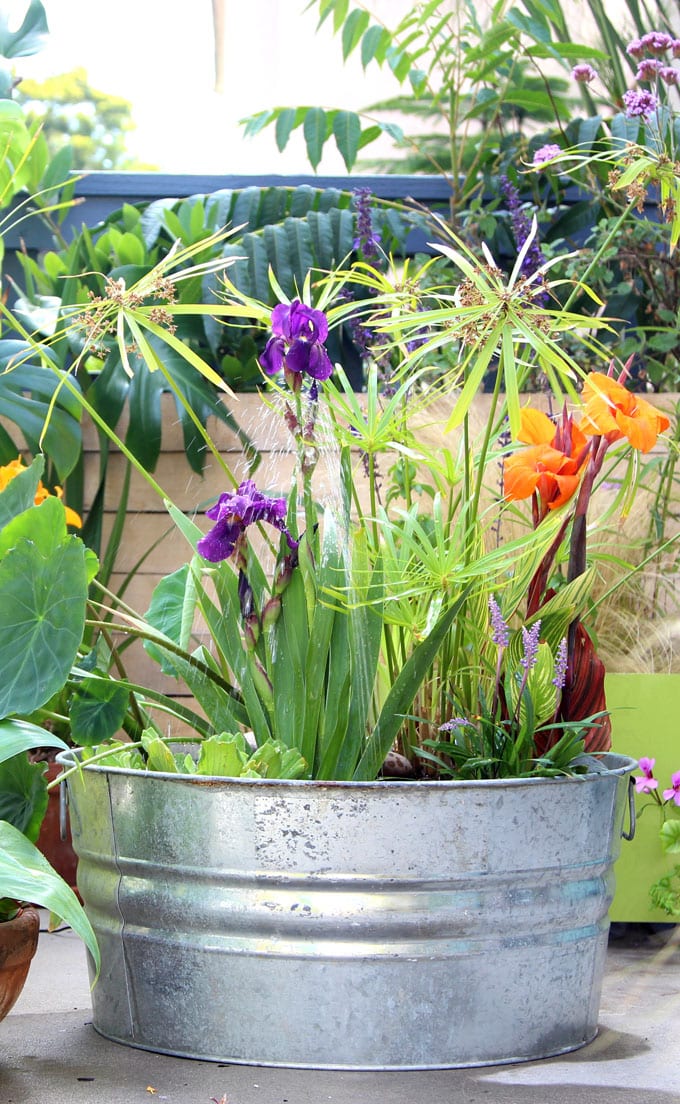
Thanks to our reader Sue who wrote me a really thoughtful note about how galvanized tanks can harm fish because the zinc in the coating can leash into the water. Zinc is good for plants, but can hurt fish. Here are a couple of solutions:
Fish often do better in old or aged galvanized tanks. Fill a new tank full of water, feel free to add plants, and let it sit for 6 month to a year before adding fish. Start with tiny fish like goldfish or mosquito fish, which are much tougher than Koi. Another way is to line the galvanized tub with pond liner if you want to have fish right away.
If you choose to have plants, here are some soil choices for pond and water garden plants: clay soil is best. Garden soil is fine too. Potting soil contains wood chips and perlite which may float on the water. Avoid rich soil with manure content, as they could cause the water to smell, or become too acidic.
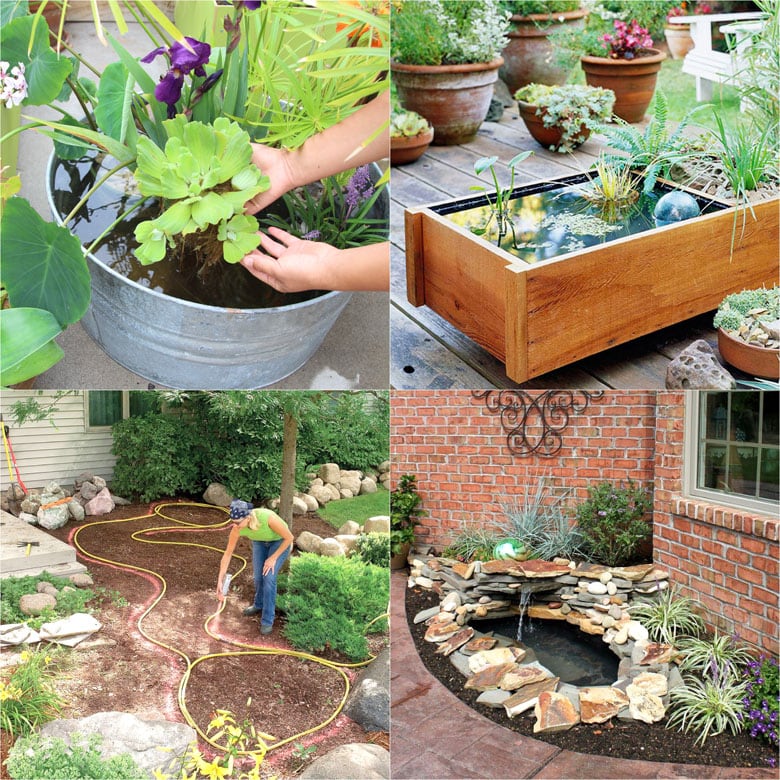
Love backyard ponds and fountains? Here’ are 10+ more easy DIY pond and water feature ideas for you!
By the way, those lovely planter boxes you see in the background are so easy to make! Here’s the DIY planter boxes tutorial!
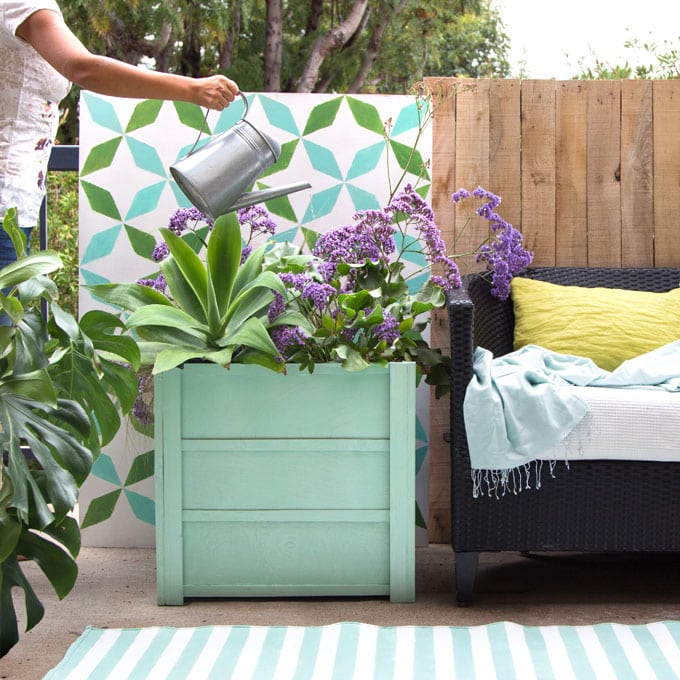
DIY planter boxes tutorial.
If you want to get started but are not ready yet for a large fountain, here’s a super fun and simple tutorial on growing plants in water indoors:
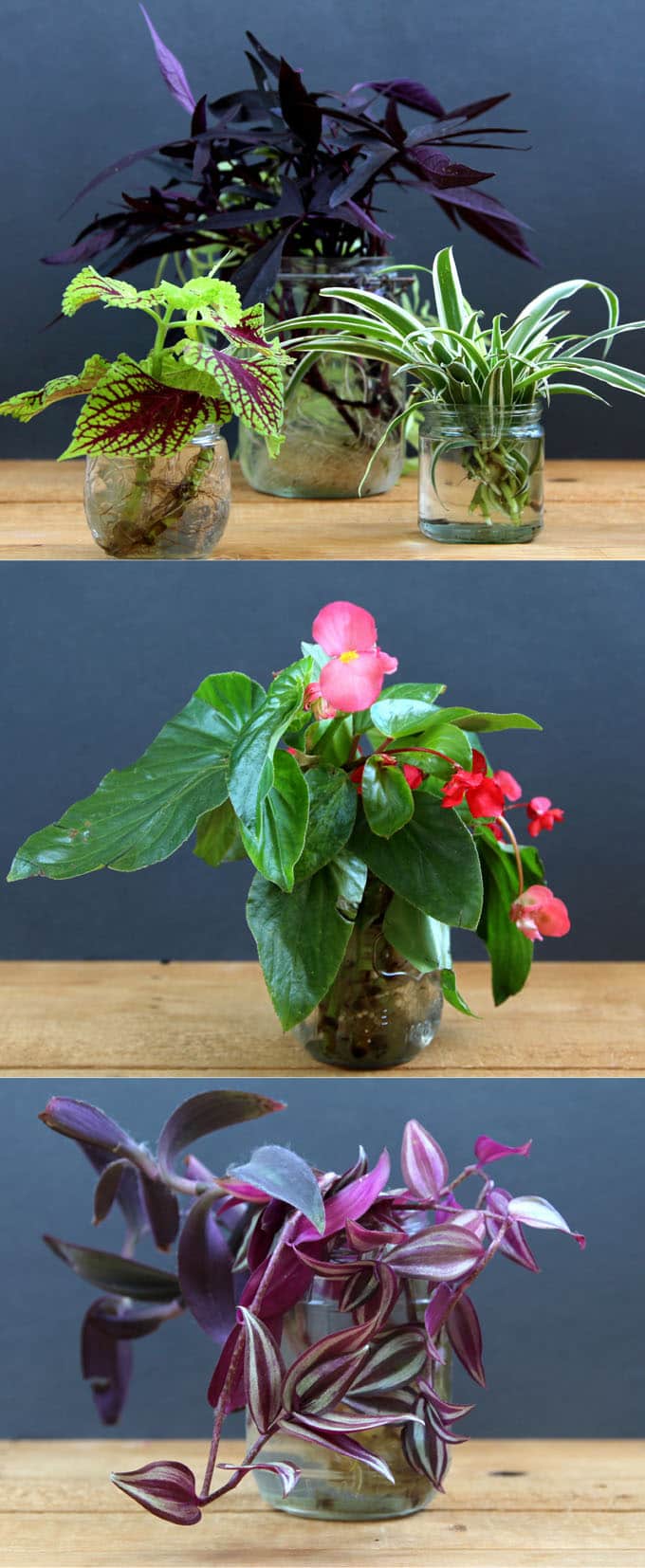
How to grow plants easily in water indoors!
Happy creating! See you next week!
